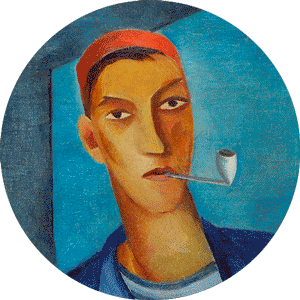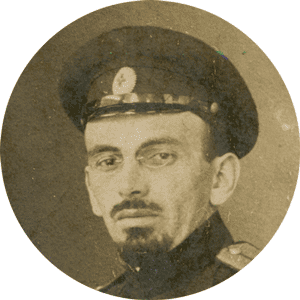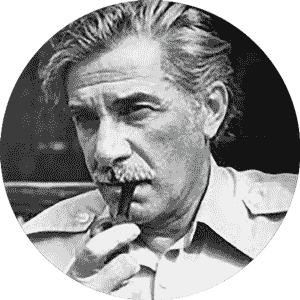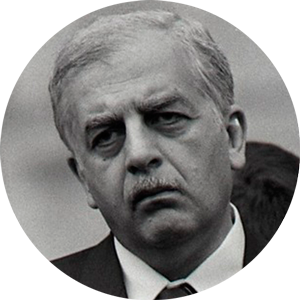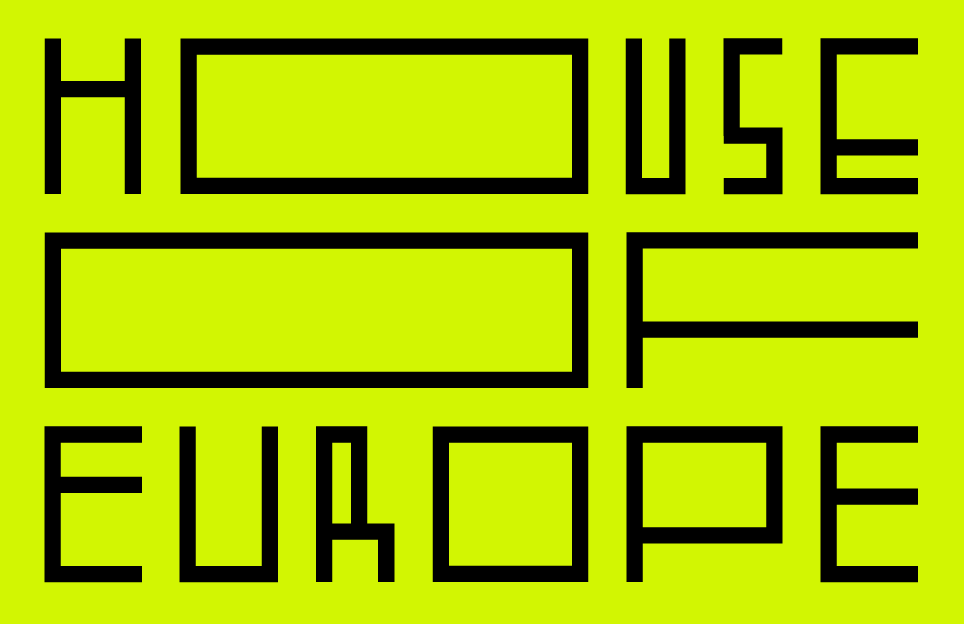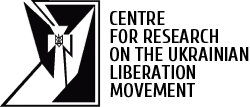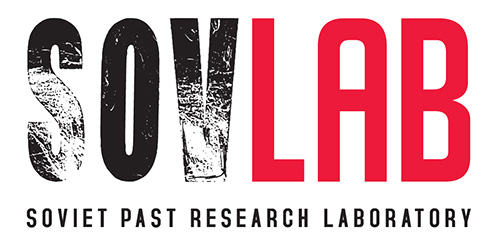Modern Georgian culture ― literature, theatre, fine arts ― was evolving through the XIX century in the periphery of the Russian Empire and at the same time was creating one of the bases of the modern National identity of Georgia. In existential search, it turned to see itself as a part of a western family but was also understanding an impact from modern Russian culture and Eastern aroma ― which historically was affecting Georgia, as a country laying in the Caucasus, on a crossroad of civilisations. This colourful mix, mosaic and chaos, for foreign gaze was most impressive and attractive to experience visiting Georgia, but, on the other hand, it was challenging for the generations of Georgian artists to find their own place in global culture. This was accelerating passion for radical changes and finding new ways of creation.
The First World War, ruining of the "old world", the collapse of the Russian Empire and the declaration of independence of the Georgian Democratic Republic in 1918 gave a new dimension to cultural life. Modern Georgian state was standing on the basis of western Democratic values ― civil rights, freedom of expression etc. For the newly born Georgian state, a heritage of national culture was valuable and in the frame of fundamental reforms ― creating a healthy environment for the flourishing of culture was one of the declared aims.
Starting state reform and nationalization of the education system, supporting a wide network of "Peoples universities", transforming first Georgian University (founded at the beginning of 1918) to ― Tbilisi state university etc. were creating tendencies, being accompanied by free and self-organized cultural initiatives. Among those were the founding Union of Georgian writers, state conservatory and plenty of artistic societies. All those actors were starting to create a basis for a renaissance of Georgian culture, despite an enormous crisis due to global war and permanent wars around the Georgian Republic for protecting independence.
Global crisis, the collapse of the Russian Empire, Bolshevik tyranny and civil war in Russia also strangely contributed to the development of Georgian culture. The Georgian republic was like a "promised land" in war and chaos of ruins of the Russian Empire and plenty of artists were rushing to Tbilisi to escape from death and hunger. Because of this, in 1918–1921, Tbilisi started to be one of the capitals of L'avant–Garde, with a sparkling artistic and bohemian life, creative experiments and dialogue of cultures.
Soviet Russian occupation in 1921 and the next decade
In February 1921, "The scythe death, with a red flag" came to the gate of the free Georgian republic. Soviet Russia, after the heavy battles during 11 of February ― 17 of March, occupied the Georgian Democratic Republic. Georgian society felt under the new and strange dimension ― scale and danger of which was hard to understand and imagine at the first touch.
Immediately after entering Tbilisi and in the first months of the occupation regime's rule, Bolsheviks started implementing their radical agenda in every sphere of life. They also maintained some propagandist activity, that time version of soft power, to clean up society's fears of brutality by their side and counterwise ― prove to them that "New government" is motivated to support national culture and development.
"Revolutionary committee" started to monopolize all publishing houses, cancelled free press editions, nationalized cinema houses and cinematographic studios etc. Same time, "Revcom" in 3 march of 1921, gifted one of the best confiscated house in Tbilisi ― nowadays Machabeli Street #13 ― to the Union of Georgian writers, which accepted it with great pleasure. Next days, representative of "Revcom" ― Shalva Eliava visited Writers house (initially it was called ― Art palace) and expressed reverences to an artistic society, saying:
"Our state is absolutely sovereign in the creation of a national state and development of its culture. There will not be any colonization and violence in Georgia. We'll cut hands to those who will try to bring back an old order ― there we'll not give mercy. Now, we in Georgia are making a great experiment on the border of Europe and Asia; we should turn the East into the ally of the Revolution. All labour forces are looking to this attempt of Georgian labourers as an example for the West and the East. May all workers of art and culture be with us in this struggle; we'll guarantee them our strong state apparatus".
Giving such a clear frame and motivation for loyalty and collaboration wasn't enough, without designing borders of acceptable behaviours and in the same days, the leading representative of Communist rule in South Caucasus ― Sergo Orjonikidze ― in a public speech of 16 of March primarily addressed to the Georgian "Intelligentsia":
"The fate of a state depends on the energy of Intelligentsia, labourers and peasants. I want to rebuke Georgian Intelligentsia, that they should learn a bitter lesson of Russian Intelligentsia. After long sabotage, which strongly caused a state, Russian Intelligentsia concluded that there is no future besides Soviet Russia and started collaborating with the Soviet Government. Georgian Intelligentsia should say to itself ― Menshevic's Georgia died, hail to labourers and peasants of Georgia! To such Intelligentsia ― all doors will be open. If Intelligentsia starts to sabotage, conspiracy and insurgent, we'll speak with them in only language ― a language of bullets!".
This frame ― comfort for collaboration and repressions for resistance, became an official frame of the General policy of the Soviet regime towards culture and artistic society in the 1920's. In the beginning, according to the extremely low support in Georgian society and the vacuum of the legitimacy of the Soviet regime, it was trying to ensure control of "Intelligentsia'', step by step, not making a radical move, until the effective control of all spheres wasn't guaranteed.
On the other hand, the regime understood that despite expressing loyalty to the Soviets, most artists were still staying either supporters of idea of Free Georgia (were involved in underground resistance movement led by Georgian Social–Democratic party) or were originally linked with radical nationalistic groups and values. At the same time, the quantity and authority of artists, who essentially were supporting or representing Communist ideas, was too limited. The regime was trying to organize an obligatory frame of coexistence of such groups and their united support to Soviet ideology.
This strange and non–productive dualism lasted until the end of 1920's. Leaders of the Communist regime like Philipe Makharadze always ensured writers that the regime wasn't motivated to force them to be loyal and wasn't assisting an artificial hegemony of Pro–Soviet groups, but the reality was different. Beside the fact that the regime was loyal to the creation of different artistic groups and unions, it was demanding from them to unite under "Federation" and work together.
At the same time, the State (Communist party) was assisting such organizations as "Proletarian writers'' with maximal resources. Since 1921, state censorship controlled all editions, and it was absolutely impossible to publish a piece of art, unacceptable to the official ideology. State security system ― Georgian SSR and Transcaucasian SFSR Cheka and GPU were actively infiltrating artistic organizations and groups and permanently were informing a Central committee of Georgian communist party and Transcaucasian district committee of Russian Communist party, about real positions and mobilizations in artistic society.
Throughout the 1920s, it's rare to have an open "scandal" of publishing an Anti–Soviet piece of art because of State censorship, and almost no one was put under repressions due to such behaviours. The majority of writers/artists who fell victims to Soviet terror during the 1920s, were arrested, exiled or shot ― according to their political activities, membership of political parties and involvement in underground resistance movement and Anti–Soviet uprising of August 1924.
Forced unification and dictate of Socialist realism as a prelude to the Great Soviet terror of 1937–1938
At the end of the 1920s, after neutralizing “internal counterrevolution” defeating Trotskyist opposition in the communist party, the Soviet regime announced its two major campaigns ― switching on planned economy and collectivization of agriculture. Failure of forced collectivization brought a short break and stagnation. Still, soon ― regime step by step started implementing politics of strict centralized and total control in every sphere of state and public life, including artist circles. From 1932 Communist party declared a “Socialistic realism” as the onliest frame for literature and art. Different artistic unions and groups were cancelled and a monolithic organization ― “Union of Georgian Soviet Writers” — was created.
Before a great purge, in the middle of the 1930s, few Georgian writers were exiled as "Trotskyists" and "allies of Kulaks", but no one could imagine the upcoming horrors of the Great purge of 1937.
At the beginning of 1937, after the first wave of cleansing in the old guard of the Bolshevik party and High State bureaucracy, artists were chosen as actors in the scenario of already planned operations of extermination of "conspiracies of counterrevolutionary organizations". Head of a Georgian Communist party ― Lavrenti Beria in May 1937, on X assembly of the party openly named several poets and writers as friends and allies of "already unmasked enemies of people". It was considered as a signal of witch-hunting in the Writer's Union. From a hot summer of 1937, in the building of Writers Union, matchable Street #13, autodafes of writers ― judging them and excluding them from union before or after arrest by NKVD ― was a permanent, tragic scene.
On July 22, 1937, Famous Georgian symbolist poet ― Paolo Iashvili, after long series of interrogations and psychological pressure in NKVD to confess and name friends and colleges as "counter-revolutionaries", committed suicide in Writers house during a session. This desperate act of protest stays in collective memory as one of the most known tragedies and a symbol of great terror against the artist society.
According to a planned scenario ― victims belonged to the different categories, as ― members of "Trotskyist", "Right" and "Nationalist" organizations.
Three chairmen of the Georgian Writers union were arrested and shot during 1936–1938.
Up to the 70 members of the Writers union's central and regional organizations fell victims of a Great purge, including classic writers, avant-gardists and many "proletarian writers". Tens of painters, sculptors, actors, theatre directors shared the same fortune.
A frame of "Socialist realism" was accompanied by a cult of Stalin and "his faithful pupil" ― Lavrenti Beria. Series of novels, poetries, paintings and sculptures glorifying them ― were produced in the spirit of industrial manufacturing, and the majority of survivors of the great terror of 1937–1938 were already adapted to live and work under the consolidated totalitarian machine ― absolute control of the party, censorship and state security.
WWII and Post–Stalinist Era
During WWII, the machine of State security of the Soviet totalitarian regime continued hunting underground conspiracies. So-called “Intelligentsia” and artist society was still staying under strict control and surveillance.
In 1941–1943, while a fortune of war wasn’t clear and in Georgian society, sympathy towards the German state was still circulating, accompanied by hate of the Soviet regime and mistrust of its propaganda about Nazi crimes, many young people were trying to self-organize and prepare to reality when Germany was entering on Georgian territory. Soviet NKVD/NKGB actively sought such underground groups and often was fabricating their amount and scale and activities and linking a sporadically existing real partisan and underground groups of resistance, with childish circles of dissident youngsters, students or professors of different institutes and universities.
In the frame of such a tendency, few young Georgian writers and non–formal artist groups fell victims to death sentences or were sent to GULAG during the 1940s.
After the end of WWII, Several artists were repressed as former POWs or Legionaries of Wehrmacht. Some of them suffered as a victim of mass ethnic deportations of the 1940s.
After the death of Stalin and Khrushchev's "liberalisation," the majority of victims of the Great terror of 1937–1938 were rehabilitated. Their works appeared again in public spaces and books were published again. However, ideological control of art and surveillance of state security remained a part of everyday life, obviously more actively after Khrushchev's attack on modernist art and the activation of a policy of control.
In the 1950s a rare scandal took place when the winner of Stalin's prime, proletarian writer and secret agent of KGB ― Alexander Cheishvili ― escaped from an official journey in 1958 and stayed in West Germany, where he died soon in quite suspicious circumstances.
After XX congress of the Communist party in 1956 and the deconstruction of Stalin's cult of personality, the regime suppressed a mass demonstration of youngsters in Tbilisi. They were defending the honour of "fatherly Stalin". This had a shocking effect on society. The trauma of 9 of March 1956 defined a tendency to appear a new sporadic wave of formation of underground groups of young people, for whom patriotism was strangely mixed with sympathy to Stalin and aim was determined as a separation of Georgia from Russia for being an independent state. Some of such groups were evolving based on non–formal literature circles. The KGB soon identified the majority of those groups and arrested members experienced in political prison camps in the 1960s and 1970s.
At the end of 1980s, during the irreversible symptoms of the collapse of the Soviet regime, the Communist party was trying to adapt to the new realities created by "Perestroika" and a massive crisis of loyalty. They pretended to be supporters of publicity and democracy. In the frame of such an agenda, even the KGB started to announce an "open door" policy to the public interest about the victims of mass repressions.
In 1990 Museum of Georgian literature addressed the KGB of Georgian SSR to inform about the possibility to work with documentation in the archive of KGB about repressed writers. As a response, KGB picked up from the archive tens of criminal cases of writers and physically gave the originals to the Museum of Georgian literature.
After re-establishing the independence of Georgia, in 1991, President Zviad Gamsakhurdia insisted on transferring those documents from the museum to the chancellery of the President for a few weeks ― he was motivated to read those sources. Documents were given under the control of the President. After the coup d'etat in Tbilisi, December 1991, January 1992, when the House of Government was burnt and Gamsakhurdia left the country, those archival cases disappeared. Still, society has no chance to explore the fortune of tens of the writers under the machine of mass repressions.
Same time, during the coup d’etat, the headquarters of the former KGB was burnt. Up to 10 000 criminal cases of victims, who were rehabilitated during Soviet times, which were separated from the main archive, were also burnt, and a few other writers and artists documentation was lost in that category.
Until today, after those catastrophic scenes of 1991–1992, state officials are claiming that 80% of the former KGB archive either was burnt or was taken in Smolensk repository of KGB in 1990. Those included an operative archive, personal cases of agents and employees of State security. These conditions are making it almost impossible to reconstruct a whole realistic picture of surveillance and control of the artist society and process by Soviet state security in Georgia.



